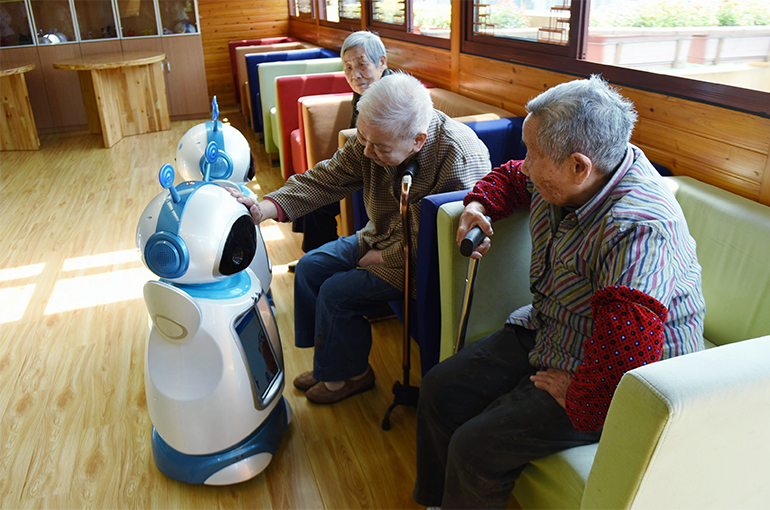 Robot Nurses Are Not Yet Ready to Fill China's Caregiver Gap
Robot Nurses Are Not Yet Ready to Fill China's Caregiver Gap(Yicai) July 19 -- Despite the massive challenges posed by China's aging population and a shortage of millions of caregivers, experts say that technological and economic factors limit the application of robot nurses.
Robotic nurses might be welcomed by institutions but such devices are not well received by the users, domestic and international experts pointed out to Yicai during the Third Conference of Global Health Forum of Boao Forum for Asia yesterday.
"In practice, these robots are often left idle, and nursing homes tend to prefer using diapers," said Chen Diansheng, a professor at Beihang University. The time to install and debug robots is long and it also takes a while to clean the devices so diapers are more efficient, Chen added.
China has 40 million at least partially disabled elderly people, and 78 percent of the elderly suffer from at least one chronic disease, Liu Fang, deputy director of the aging health department at the National Health Commission, said during the forum.
The high number of patients has created a demand for over six million elderly care workers, according to public data. However, the nation only has around 500,000 employees in the field, and among them, only 330,000 are engaged in long-term care.
Robot nurses are one potential solution but they are still in the initial stage of "going from zero to something," said Chen who is a deputy leader of a robotics expert group. The degree of integration between engineering and nursing is still "far from sufficient." For example, nurses can quite easily help bedridden people turn over every two hours but machines are still unable to do the same as it is important to avoid inflicting pain on the arms and ensure that breathing is not obstructed, Chen explained.
The biggest issue is the high cost as robot nurses cost from tens of thousands to hundreds of thousands of yuan, making them unaffordable for many families, said Yu Hongliu, director of the rehabilitation engineering institute under the University of Shanghai for Science and Technology.
However, as global aging intensifies, robots will definitely be adopted on a larger scale in the future to achieve long-term care for the elderly, said Yukio Honda, a project officer at the Japan Agency for Medical Research and Development. Humanoid robots, in particular, have significant application prospects, Honda added.
Robots that look like humans are expected to become another disruptive product following computers, smartphones, and electric vehicles, Chen predicted. The Chinese government, research institutions, and enterprises are investing heavily in this field. However, it may take around a decade for these products to advance from the stage of research and development to application, the professor added.
The latest Global Health Forum of Boao Forum for Asia was a two-day event in southern China that featured 21 sub-forums, salons, dialogue sessions, and other highlights. Participants from nearly 50 countries and regions around the world, including government officials, experts, scholars, and business representatives, attended the forum.
Editor: Emmi Laine